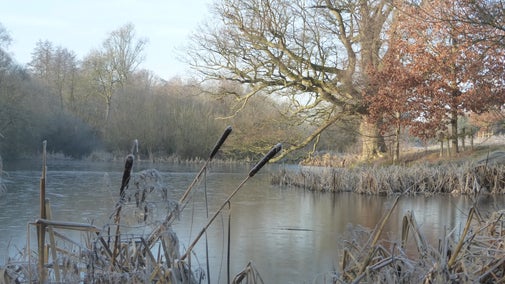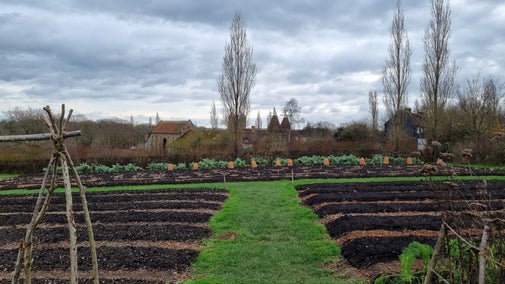
Donate
Everyone needs nature, now more than ever. Donate today and you could help people and nature to thrive at the places we care for.

This natural flood-management project to ‘re-wet’ and restore a historic floodplain will provide a dynamic resource for wildlife, as well as contributing to the South East Rivers Trust’s ambition to reduce flood risks within the Medway catchment.
This area, aptly named ‘Frogmead’, or ‘frog meadow’, likely derives its name from a history of amphibians taking advantage of seasonal moisture when the river was in high flow.
Floodplain meadows were once a common feature of the Weald, and the frogs of ‘frog meadow’ have now begun to return. Over time the river has been straightened, allowing the water to flow faster and the channel to become deeper, draining the floodplain that surrounds it.

We have restored this floodplain meadow by using a sluice to ‘skim off’ excess flow after heavy rainfall. Flood water spreads across the field through a series of excavated shallow dips which will hold the water before allowing it to seep slowly back into the main channel.
With climate change bringing more extreme weather events, increasing the time between rainfall and water reaching rivers is crucial to reducing flood risk and soil erosion.
By reintroducing water to this once-damp field, we hope to increase the abundance of a wide range of flora and fauna; attracting wetland birds such as little egret, snipe and teal as well as further expanding our healthy dragonfly population and allowing frogs to return to Frogmead.
The Frogmead Restoration Project is being delivered by the South East Rivers Trust in partnership with the National Trust, with funding from the EU Interreg North Sea FRAMES project, Defra and the Environment Agency.
This is part of a programme of Natural Flood Management projects across the River Medway catchment to help improve our understanding of these techniques, deliver wider environmental benefits and manage flood risk as part of the Medway Flood Partnership.

Everyone needs nature, now more than ever. Donate today and you could help people and nature to thrive at the places we care for.
With 460 acres of beautiful Wealden countryside there’s plenty of space to explore, run around, walk the dog, cycle and spot wildlife on the estate at Sissinghurst Castle Garden.

From castle to prison, working farm to world-renowned garden, Sissinghurst's past is nothing but varied and each of its incarnations have added to its story.

Explore the garden at Sissinghurst this season and discover why it ranks among the most famous gardens in England.

Find out more about the veg, fruit and herbs we grow in the vegetable garden at Sissinghurst and what happens to the produce after it’s picked.
